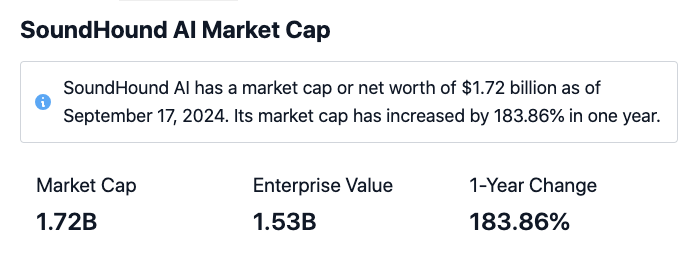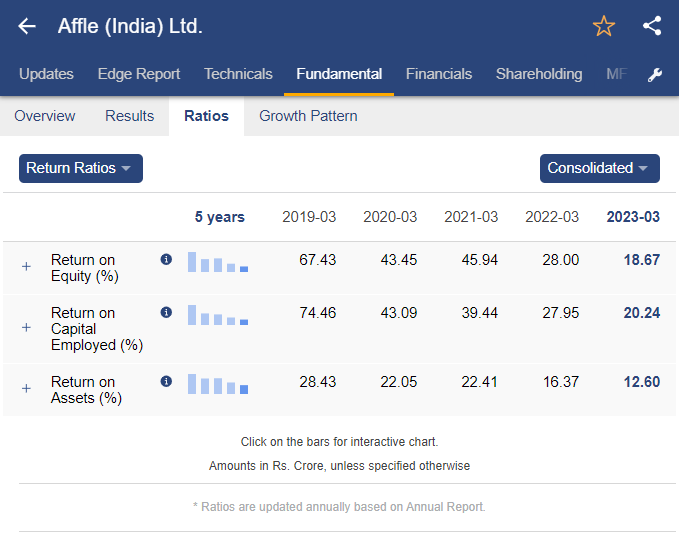20 Good Reasons For Choosing Penny Ai Stocks
Wiki Article
Top 10 Tips To Scale Up Gradually In Ai Stock Trading, From The Penny To The copyright
This is especially true when dealing with the high-risk environment of penny and copyright markets. This method helps you gain experience and refine your models while reducing the risk. Here are 10 guidelines to help you expand your AI stock trading operation slowly.
1. Begin with an action plan and strategy that is clear.
Before starting, you must determine your objectives for trading and your risks. Also, identify the markets you're interested in (e.g. penny stocks and copyright). Start small and manageable.
Why: A plan that is clearly defined will help you stay focused and limit your emotional decision making when you start with a small. This will help ensure that you will see a steady growth.
2. Test the paper Trading
You can begin by using paper trading to test trading. It uses real-time market data without putting at risk the actual capital.
What's the benefit? You can try out your AI trading strategies and AI models in real-time market conditions, with no financial risk. This will help you detect any potential issues prior to scaling up.
3. Select an Exchange or Broker that has low fees.
Choose a trading platform, or brokerage with low commissions and that allows investors to invest in small amounts. This can be helpful when you first start investing in penny stocks, or any other copyright assets.
Examples of penny stocks: TD Ameritrade Webull E*TRADE
Examples of copyright: copyright copyright copyright
Reasons: Reducing transaction costs is crucial when trading smaller amounts. It ensures that you don't eat into your profits by charging excessive commissions.
4. Concentrate on a single Asset Class Initially
Tips: To cut down on complexity and focus on the learning process of your model, start by introducing a single class of assets, like penny stock, or copyright.
Why? Being a specialist in one market will allow you to gain expertise and cut down on learning curves before expanding into different markets or different asset classes.
5. Use smaller sizes of positions
You can reduce risk by limiting your trade size to a certain percentage of your total portfolio.
Why: This will minimize your losses while you develop and fine-tune AI models.
6. As you gain confidence as you gain confidence, increase your investment.
Tips. Once you've seen consistent positive results for a few months or quarters, increase the trading capital until your system is proven to have reliable performance.
Why: Scaling up gradually allows you gain confidence and learn how to manage risks before placing bets of large amounts.
7. At first, focus on a basic model of AI.
TIP: Start with the simplest machine learning models (e.g., linear regression or decision trees) to forecast stock or copyright prices before advancing to more complex neural networks or deep learning models.
Simpler models are easier to comprehend, maintain and optimise, making them ideal for those learning AI trading.
8. Use Conservative Risk Management
Tips: Follow strict risk management rules like tight stop-loss orders that are not loosened, position size limits, and conservative leverage usage.
Reason: A conservative approach to risk management can avoid huge losses on trading early in your career and ensures that you have the ability to scale your strategies.
9. Reinvesting Profits in the System
Then, you can invest the profits in upgrading the trading model or scalability operations.
Why is it that reinvesting profits help you compound returns over time, and also improving the infrastructure needed for larger-scale operations.
10. Make sure you regularly review and improve your AI Models
You can improve your AI models by reviewing their performance, adding new algorithms, or enhancing the engineering of features.
Why? By constantly enhancing your models, you'll be able to ensure that they adapt to reflect changing market conditions. This can improve your ability to predict as your capital grows.
Bonus: Consider diversifying your options after Building a Solid Foundation
Tip : After building an established foundation and showing that your method is successful over time, you might think about expanding your system to other asset types (e.g. moving from penny stocks to larger stocks or incorporating more cryptocurrencies).
Why: Diversification helps reduce risk and can improve returns because it allows your system to capitalize on different market conditions.
Start small and increase the size gradually gives you time to adapt and learn. This is crucial for long-term trading success especially in high-risk environments like penny stocks and copyright. Take a look at the top he has a good point on copyright ai bot for website tips including ai stocks to invest in, ai in stock market, best ai trading app, ai stocks to invest in, ai stock trading, free ai tool for stock market india, best ai penny stocks, penny ai stocks, stock trading ai, ai for trading stocks and more.

Top 10 Tips On Paying Attention To Risk Measures For Ai Prediction Of Stock Pickers And Investments
It is essential to keep an eye on risks to ensure that your AI prediction, stock picker and investment strategies remain balanced and resilient to market fluctuations. Understanding and managing risk will help safeguard your portfolio from massive losses and lets you make informed, based decisions. Here are 10 tips for integrating risk-related metrics into AI investing and stock selection strategies:
1. Learn the key risk metrics to be aware of : Sharpe Ratios (Sharpness), Max Drawdown (Max Drawdown) and Volatility
Tips Focus on the most important risk metrics, such as the maximum drawdown and volatility, in order to gauge your AI model's risk-adjusted results.
Why:
Sharpe ratio measures the return of a portfolio relative to risk. A higher Sharpe ratio indicates better risk-adjusted performance.
Maximum drawdown assesses the largest loss from peak to trough, helping you understand the potential for huge losses.
The term "volatility" refers to price fluctuation and market risk. The high volatility of the market is linked to greater risk, whereas low volatility is linked to stability.
2. Implement Risk-Adjusted Return Metrics
TIP: Use return measures that are risk adjusted like Sortino ratios (which concentrate on downside risks) as well as Calmars ratios (which measure returns based on the maximum drawdowns) in order to assess the actual performance of your AI stock picker.
The reason: These metrics assess the extent to which your AI models perform compared to the risk they take on. They allow you to determine if the return on investment is worth the risk.
3. Monitor Portfolio Diversification to Reduce Concentration Risk
Tip: Use AI to optimize and manage the diversification of your portfolio.
Why: Diversification can reduce the risk of concentration. Concentration can occur when a portfolio becomes overly dependent on one particular stock, sector or market. AI helps to identify the connections between assets and make adjustments to allocations to minimize this risk.
4. Track Beta to Measure Market Sensitivity
Tips: You can utilize the beta coefficient to measure the sensitivity to the overall market fluctuations of your stock or portfolio.
The reason is that a portfolio with a beta greater than 1 is more volatile than the market, while having a beta lower than 1 indicates lower volatility. Knowing beta can help you tailor the risk exposure to market fluctuations and the investor's tolerance.
5. Implement Stop-Loss levels and Take-Profit Limits Based on Risk Tolerance
Use AI models and forecasts to establish stop-loss thresholds and take-profit levels. This will help you reduce your losses while locking in profits.
Why: Stop-loss levels protect you from losses that are too high, and a take-profit level locks in gains. AI can identify optimal levels by analyzing historical price movements and volatility. This can help maintain a balanced risk-reward ratio.
6. Monte Carlo Simulations to Evaluate Risk
Tips Rerun Monte Carlo simulations to model the range of possible portfolio outcomes based on different market conditions and risk factors.
Why? Monte Carlo simulations allow you to evaluate the future probabilities performance of your portfolio. This helps you prepare for a variety of risks.
7. Evaluation of Correlation to Determine Risques that are Systematic or Unsystematic
Tips. Utilize AI to analyse correlations between the assets in your portfolio and market indexes. You can identify both systematic risks as well as unsystematic ones.
The reason: Systematic risk impacts all markets (e.g. recessions in the economy) however, the risk of unsystematic is specific to specific assets (e.g. specific issues for companies). AI can help reduce risk that is not systemic through the recommendation of less correlated investments.
8. Value at Risk Monitor (VaR) to determine the magnitude of potential losses
Tip: Use Value at Risk (VaR) models to determine the potential loss in an investment portfolio over a certain period of time, based on an established confidence level.
What is the reason: VaR gives you a clear picture of what could happen in terms of losses, allowing you to assess the risk in your portfolio in normal market conditions. AI calculates VaR dynamically and adjust for the changing market conditions.
9. Set a dynamic risk limit Based on market conditions
Tip: Use AI to dynamically adjust risk limits according to current market volatility, economic climate, and stock correlations.
The reason: Dynamic limits on risk ensure your portfolio does not take unnecessary risks in periods of high volatility. AI analyzes data in real-time to adjust your portfolio and maintain your risk tolerance at acceptable levels.
10. Use Machine Learning to Predict Risk Factors and Tail Events
TIP: Make use of machine learning algorithms to forecast the most extreme risks or tail risks (e.g. market crashes, black swan events) Based on historical data and sentiment analysis.
What is the reason: AI models are able to detect patterns of risk that other models might miss. This can help anticipate and prepare for the most unusual but rare market events. By analyzing tail-risks, investors can be prepared for the possibility of catastrophic losses.
Bonus: Reevaluate your the risk metrics in light of changing market conditions
Tip: Reassessment your risk factors and models in response to market fluctuations, and update them frequently to reflect economic, geopolitical and financial risks.
The reason is that markets are always changing and outdated models of risk can result in inaccurate risk assessments. Regular updates let the AI models to adjust to market conditions that change, and reflect new risk factors.
Conclusion
You can design an investment portfolio that is more flexible and resilient by carefully monitoring risk metrics, by incorporating them into your AI prediction model, stock-picker and investment plan. AI is a powerful tool for managing and assessing the risk. It lets investors make well-informed, data-driven decisions, which balance the potential gains against acceptable risk levels. These tips will help you develop a strong risk management framework that will improve the stability and performance of your investment. Check out the top get more information about ai trading app for blog info including ai for copyright trading, best ai for stock trading, ai stock picker, ai for investing, trade ai, ai stock analysis, stock ai, trading ai, trading with ai, best ai for stock trading and more.
